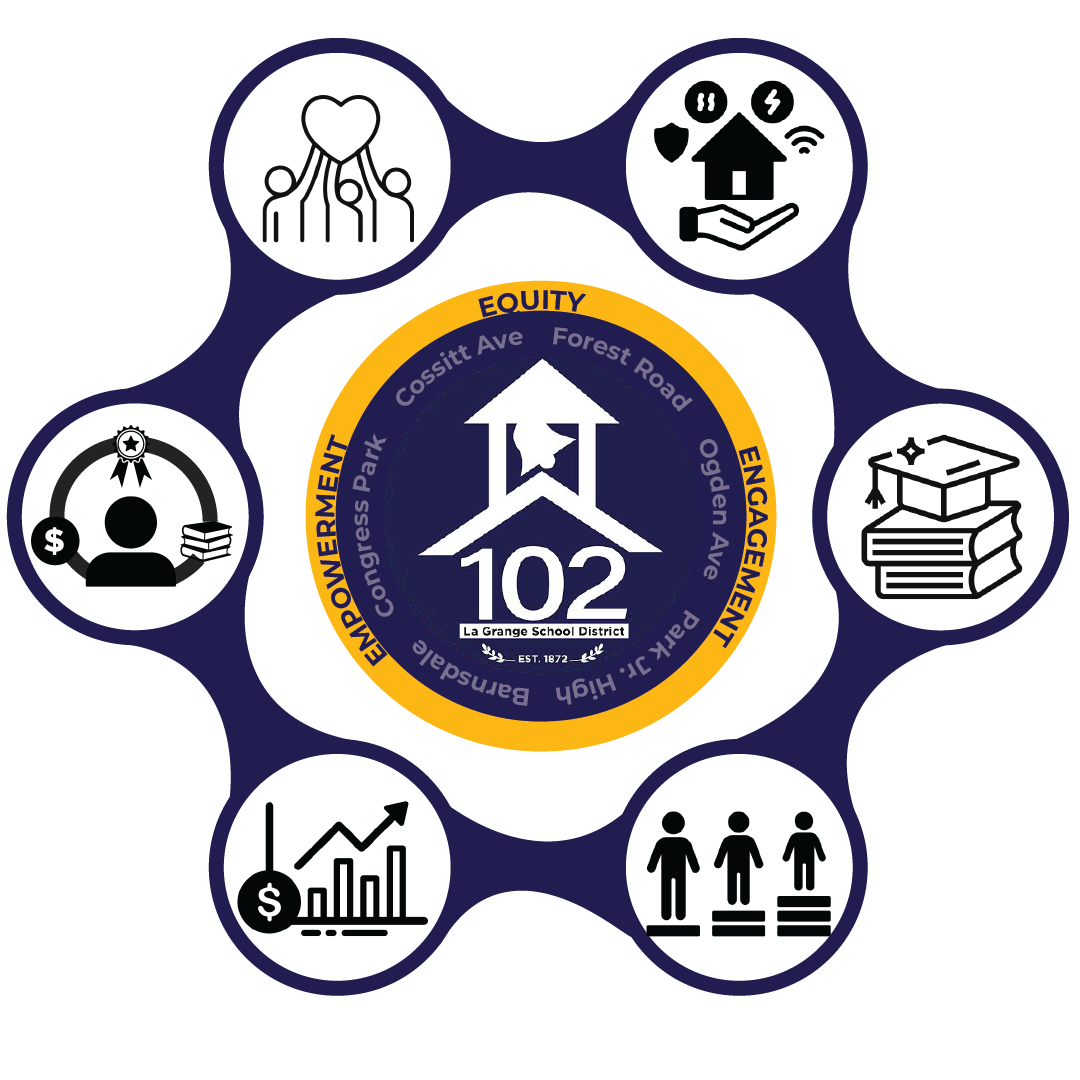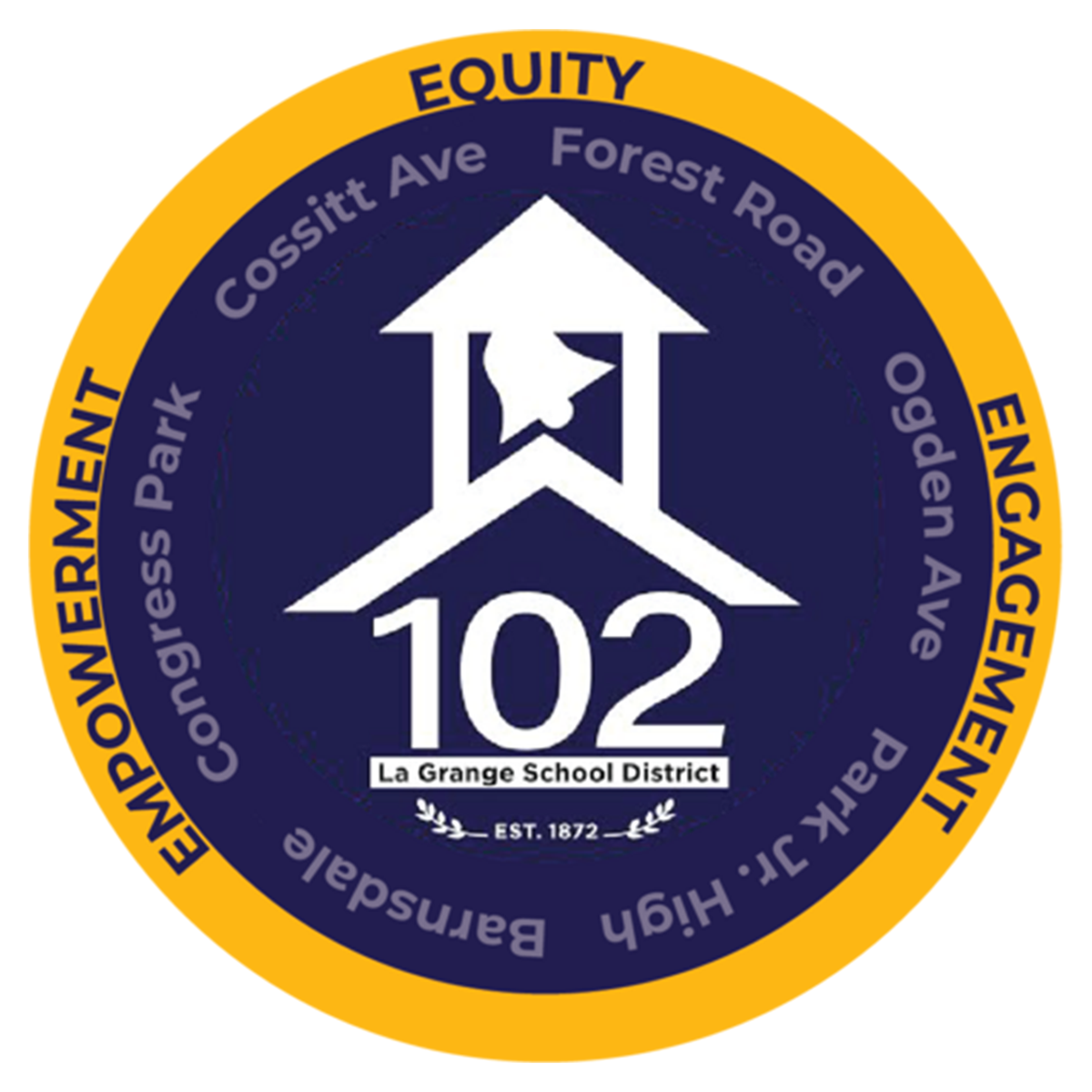January Financial Newsletter 2025
Your D102 finance matters to know and questions answered.
Bond Referendums
As the district is currently pursuing a capital (building) bond referendum in 2025, it is important to understand what a building bond referendum is and the difference from an operational referendum.
Tax bills are sent by the Cook County Treasurer and are sent out twice a year, normally in March and August. On a tax bill your tax rate is a decimal (i.e. 25.56%) that is multiplied by your EAV to arrive at the amount of annual taxes you owe. Whenever a referendum passes, the taxpayer will see a larger increase in their tax rate on the tax bill.
If you want to have an idea of how much the referendum increased your tax rate by, you can reach out to your school district, and they can provide you with the detailed information. Otherwise, you can compare your new tax bill to your previous tax bill to calculate the difference.
D102 Referendums
Based on the current $82 Million Referendum that is on the table for D102 in the April 2025 ballot, we are estimating that it will increase a taxpayer’s tax rate by 0.38 for the next 25 years. As an example, in dollars this will increase the taxes of a home with a market value of $500,000 by $532 annually. Market values that are lower will have smaller increases and market values that are higher will have larger increases.
The last referendum that was passed in D102 was an Operational Referendum in 2017. The referendum was necessary to add more revenue to the district’s operating funds as the budget had grown and the district was in deficit spending for several years. The deficit occurred after the district expanded its Early Childhood and Special Education programs but lost $2M annually in state funding at the same time following the state changing its funding model from General State Aid (GSA) to Evidence Based Funding (EBF). Instead of having to cut extracurricular programs or reducing staff to save money, the district pursued the Operational Referendum to increase cash flow. The 2017 Operational Referendum saved the district from financial disaster and ultimately state intervention that would have impacted operations of the district.
The current bond referendum will mean lots of good things to come for our students and stakeholders. It is based on a vision and goals to update our district building infrastructures and instructional programming to a futuristic and enriching model.
For more detailed information on the D102 $82 Million Bond Referendum please visit the D102 Renew website at https://www.dist102.k12.il.us/page/renew-d102-home-page.
Fund Balance
The fund balance is the amount of money that a school district has in reserves or “savings”.
The fund balance of the district is the amount of money the district has in reserves or savings. This money is intended to be used in extenuating circumstances only. The state recommends that all school districts hold at least 25% of their annual budgeted expenditures in fund reserves.
However, it is more desirable to have about 50% of annual expenditure in fund reserves for emergency purposes as the fund reserves are what the district can operate on in the absence of revenue disbursements from various sources.
Simply put, the more money there is in savings, the longer operations can be sustained.
Fund balance changes monthly. It will change because the amount of revenue the district receives from its sources is different each month and the amount of money that is spent will vary every month. Fund balances must be reported to the state in our annual audit which shows the fund balance at the end of the school year on June 30th .
Currently, D102 has about 25% fund reserves, meeting the state requirements. The Lyons Township Treasurer’s Office (LTTO) manages and tracks the revenue for the district. They provide monthly reports on the amount of revenue the district has.
Based on the September 2024 LTTO’s report the district has the following amount of revenue in its fund balance as shown below:
Fund | Amount |
|---|---|
Fund 10-Education | $14,776,954 |
Fund 20-Operations & Maintenance | $ 2,411,101 |
Fund 30-Debt Service | $ 1,512,171 |
Fund 40-Transportation | $ 806,223 |
Fund 50-IMRF/Social Security | $ 2,073,248 |
Fund 60-Capital Projects | $ (683,784) |
Fund 70-Working Cash | $ 1,567,937 |
Fund 80-Tort | $ 264,031 |
Fund 90-Life Safety | $ 0 |
Total | $22,727,881 |




